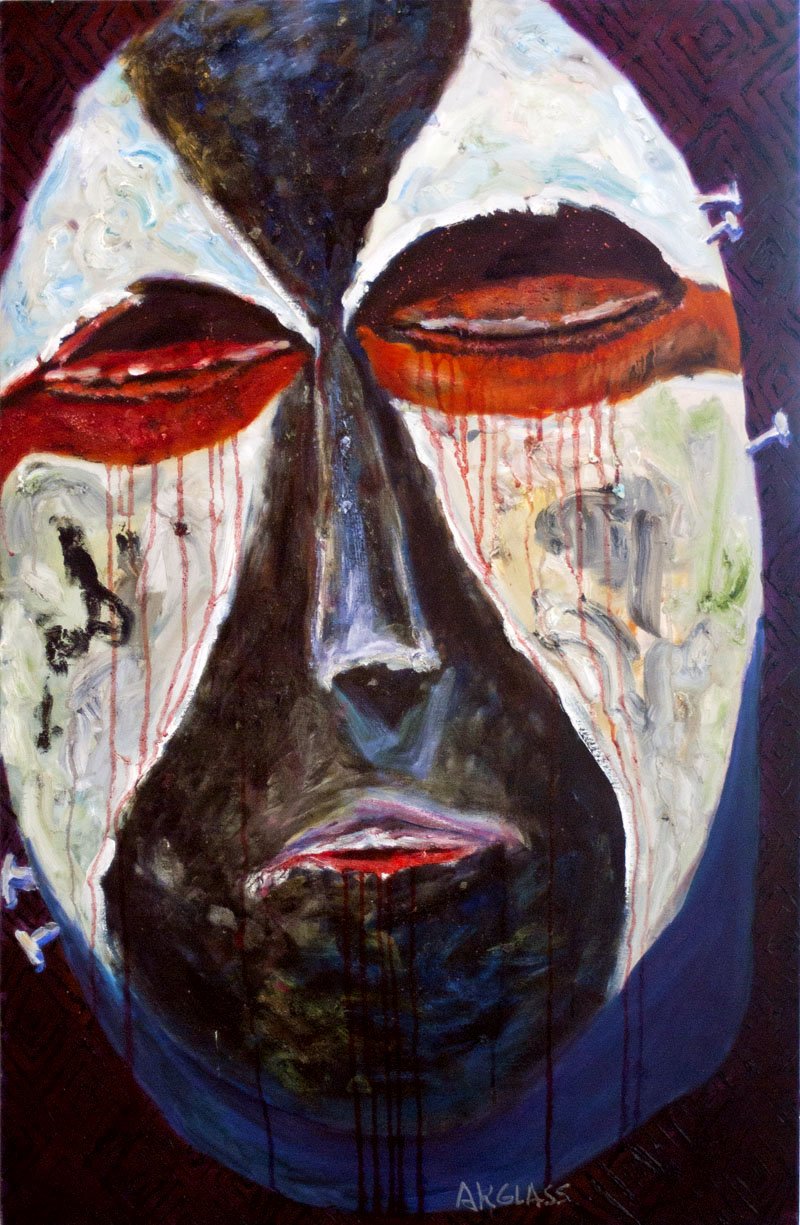 Image 1 of 1
Image 1 of 1


Death Mask
Painting of an African Mask
Unframed Oil on Canvas Original
40" x 26"
Mpongwe People, Gabon
Mpongwe masks are generally simple in form and painted in a combination of black, white, red, and/or pink.
The Mpongwe language identifies them as a subgroup of the Myènè people of the Bantus, who are believed to have been in the area for some 2,000 years, although the Mpongwe clans likely only began arriving in the 16th century, possibly to take advantage of trading opportunities offered by visiting Europeans. The Mpongwe gradually became the middlemen between the coast and the interior peoples, such as the Bakèlè and Séké. From about the 1770s, the Mpongwe also became involved in the slave trade. By the 1830s, Mpongwe trade consisted of slaves, dyewood, ebony, rubber, ivory, and gum copal in exchange for cloth, iron, firearms, and various forms of alcoholic drink.
One in a series of eleven paintings inspired by tribal African masks from museums and private collections. This mask is in the collection of the de Young Museum, San Francisco. They were in use during the 19th and early 20th centuries.
Inquire for giclee prints starting at $350.
Painting of an African Mask
Unframed Oil on Canvas Original
40" x 26"
Mpongwe People, Gabon
Mpongwe masks are generally simple in form and painted in a combination of black, white, red, and/or pink.
The Mpongwe language identifies them as a subgroup of the Myènè people of the Bantus, who are believed to have been in the area for some 2,000 years, although the Mpongwe clans likely only began arriving in the 16th century, possibly to take advantage of trading opportunities offered by visiting Europeans. The Mpongwe gradually became the middlemen between the coast and the interior peoples, such as the Bakèlè and Séké. From about the 1770s, the Mpongwe also became involved in the slave trade. By the 1830s, Mpongwe trade consisted of slaves, dyewood, ebony, rubber, ivory, and gum copal in exchange for cloth, iron, firearms, and various forms of alcoholic drink.
One in a series of eleven paintings inspired by tribal African masks from museums and private collections. This mask is in the collection of the de Young Museum, San Francisco. They were in use during the 19th and early 20th centuries.
Inquire for giclee prints starting at $350.
